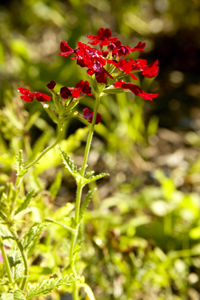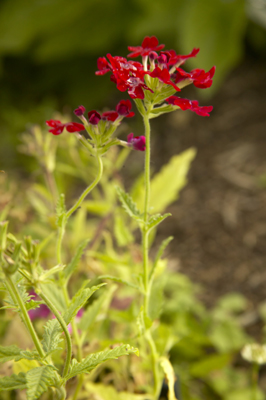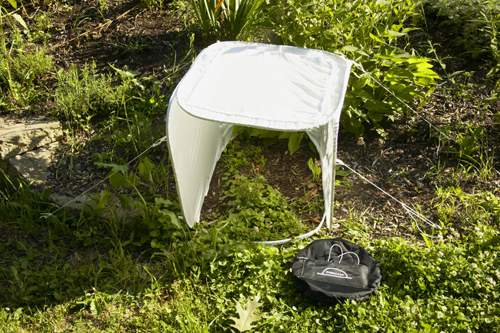Joe and Mary
Ann McDonald's
Wildlife Photography
July 2004
Question of the Month
How can you reduce
contrast and the effect of wind for flower and macro photography?
Bright sunlight is great for maximizing
your depth of field but sunlight also creates harsh shadows and
extreme contrast between the sun lighted areas and the shadows.
Wind, even the subtlest of gusts, can be a factor as well, as
your subject may sway ever-so-slightly, perhaps not even noticeably,
and create a soft, blurred image.
There are a couple of ways to handle
this. Sunlight contrast can be reduced with a diffuser, but one
must be careful to not only reduce the contrast on the subject
but also on the background. Otherwise the exposure values will
be greater on the background -- the background will be brighter,
and the viewer's eyes will be distracted and led to the non-important
areas.
Reflectors can be used to fill in shadows.
This works well, and eliminates the need to worry about having
a background that is brighter than the subject. Flash can do this
as well, especially when the flash is used only as fill.
However, none of these methods address
the other issue -- wind. For this, one must either support the
swaying subject -- and a Wimberley PLAMP does this well, or one must block the wind.
I've done so with cardboard sheets, with plexiglass, and with
clothing, and quite frankly, it can be a real pain in the neck.
John Stanford, who developed the Vested
Interest Photo Vest which I endorse extremely highly, has developed
a new product to address this issue -- wind and contrast. It's
a portable, collapsible, translucent light box that is designed
to be placed over the subject. A front window provides open air
space for inserting a lens, or for shooting into the box. A rear
zippered window can be used in several ways. It can be unzippered
so that the background is revealed -- in effect, creating a tunnel,
or a background can be inserted against the back wall. This could
be a painted background, an out-of-focus photograph, or whatever.
That background will be in the same light as your subject and
will have the same diffused light quality.


On the left, the contrasty scene before placing the Overcast box
over the flower. Note the
harsh shadows on the subject and on the background. Below, the
overcast box
placed over a subject, with the guide wires (nylon cords) bracing
four corners to
prevent the Overcast box from moving. In the lower right corner
is the nylon carrying case.

The Overcast Light Boxes come in three
sizes --an 18" box, at $99.00; a 24" box at $119.00,
and a large, 30" box at $139.00. All the light boxes come
in their own soft rounded cases -- like the round diffusers and
reflectors you've seen, and all have pegs and cord to anchor the
box securely in case of a stiff breeze.
You can reach John for more information
at JohnStanford@VertexPhoto.com (email) or visit his website at www.vertexphoto.com.
Previous Questions
of the Month
KEY:
|
Exposure |
DIGITAL |
Camera Techniques |
Flash-Remotes |
In the Field |
NANPA |
Contact us by e-mail: hoothollow@acsworld.com
Or FAX us at: (717) 543-6423.
Return to Home
Page.


